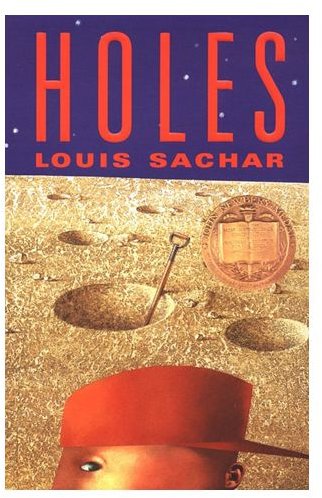Four Classroom Discussion Topics for "Holes": Irony, Flashback, Characterization & Symbols
If your students need extra help understanding the novel Holes by Louis Sachar, discuss the following important topics with them. You’ll find examples and explanations which use quotes from the novel and your students will soon build their understanding and confidence level for reading discussion.
Irony
“There is no lake at Camp Green Lake” (page 3). What a classic line! Help your students understand irony by referring to this quote from the novel. Irony, that great literary term for the intentional humor that comes from the expectation not meeting up with the reality. The place is called Camp Green Lake, yet there is no lake. How ironic!
It’s the same situation with Stanley and the shoes: “Now, as Stanley lay on his cot, he thought it was kind of funny in a way. Nobody had believed him when he said he was innocent. Now, when he said he stole them, nobody believed him either” (page 22). Ask your students to locate more examples of irony in the novel. I’m sure they’ll be able to name a few.
Flashback
Stanley Yelnats was named after his great-great grandfather who happened to be cursed because he stole some pig. Whenever the story stops the present course and refers to a moment in time from the past, that’s called a flashback. There are lots and lots of flashbacks in Holes.
The reader first hears about the origins of the curse on page 28: “Madame Zeroni warned that if he failed to do this, he and his descendants would be doomed for all eternity.” So why is flashback so important in a story? This sounds like a great question to ask your students. But if they don’t have answers, flashback is like a time machine for a novel that allows the reader to “see” events as they actually happened. Students can now explain which other parts of the novel use flashback.
Characterization
Stanley Yelnats is a great rounded character – he changes throughout the course of the novel. He changes physically while he’s at Camp Green Lake because digging holes in the hot sun all day will help any person lose weight and grow stronger. Mr. Pendanski likes to point out the purpose for digging holes as something completely innocent: “You’re not looking for anything. You’re digging to build character” (page 27).
There are other characters who don’t change at all, flat characters like the Warden, Mr. Sir, and Mr. Pendanski. They don’t change their beliefs, they continue to act intimidating or cruel or selfish throughout the novel. Stanley, however, does change. He changes his mind about helping Zero learn to read and he accepts his fate by recognizing that he ended up at Camp Green Lake for a reason and he was a better person for it by the end of the novel: “If Zero had just kept those shoes, then neither of them would be here right now. As Stanley stared at the glittering night sky, he thought there was no place he would rather be” (page 187).
Symbols
There are many excellent symbols to be found in the novel Holes. Onions represent not just a food source for Stanley and Zero during their stay on Big Thumb. Both characters reveal many layers to their lives, and as the story comes to an end, more and more layers are peeled away.
The stolen shoes could also serve as a symbol in this novel. They were the item that brought Stanley and Zero together in the first place: “When the shoes first fell from the sky, he remembered thinking that destiny had struck him. Now, he thought so again. It was more than a coincidence. It had to be destiny” (page 187). Ask students to identify other items in the novel which continue to resurface. Could they hold a symbolic meaning?
Improving Comprehension
With these teaching ideas, you can engage students in meaningful conversation about four essential elements found in the novel. By doing so, you’ll be sure to cover a wide range of topics that will help them comprehend the novel on a whole new level and give them a renewed sense of confidence before taking their exam.
References
- Sachar, Louis. Holes. Dell Yearling: New York, 1998.
